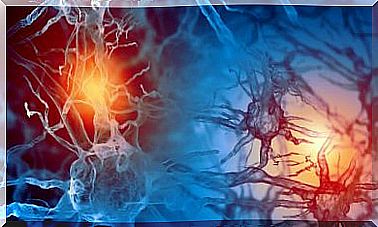8 Natural Ways To Get Rid Of Sciatic Pain
Complementary therapies, such as acupuncture or cryotherapy, can be helpful in reducing sciatic pain. Discover other options for your treatment.

Sciatic pain is a condition that develops due to irritation of the sciatic nerve. It can be experienced in the lower back, although it often extends to the back of the legs and often even to the feet.
It should be noted that, sometimes, the pain does not involve the sciatic nerve, but it is so called due to the similarity of the symptoms.
In addition to this discomfort, the person may experience muscle weakness, decreased muscle reflexes, and difficulties in performing movements.
Most cases develop mildly and sporadically, due to physical overexertion or trauma. However, a part of the population suffers from it chronically, mainly due to inflammatory diseases, genetics or transitory situations, such as pregnancy.
Natural methods to relieve sciatic pain
Sciatic pain is a problem that afflicts many people. Lifestyle, work, and even poor posture for a few seconds can lead to this problem.
Fortunately, with the right treatments, many of your symptoms can be alleviated. These must be prescribed by a specialist, and can be complemented with some alternatives that have the approval of the same.
1. Acupuncture

Acupuncture is one of the most popular treatments in traditional Chinese medicine. It consists of inserting small needles throughout the body.
According to this culture, the human being would have specific body points, which would correspond to channels. Supposedly, thanks to the needles, the life force could be redirected and balanced.
Although this theory does not have any type of scientific support, studies have been published indicating that this practice has a certain analgesic effect.
This research by a team from the China Academy of Chinese Medical Sciences indicates that acupuncture treatment may be more effective in relieving sciatic pain than some NSAIDs, such as ibuprofen.
However, the results correspond to a fairly limited sample, so more research would be needed in this regard.
2. Yoga
According to this study by a team from the University of California, yoga has been shown to significantly relieve sciatic and low back pain. It also suggests that it could positively influence mood, but there is no conclusive evidence on this yet.
3. Massages
One of the best resources to alleviate muscle ailments is massage. Its application is not only relaxing, but also therapeutic. However, it is important to have them performed by a physical therapist, as poor technique can make symptoms worse.
Ideally, your lower back and hips should be targeted, preferably using tools such as a foam roller or tennis ball. This allows the piriformis muscle and the gluteal muscles to be worked in depth .
4. Analgesics and anti-inflammatories

Whether natural or pharmacological, pain relievers and anti-inflammatories can be very effective in treating sciatica pain.
It is important, however, not to abuse pills, because this could damage the stomach. In fact, it is preferable to go to the doctor first to determine how to consume them and in what dose.
Although they are usually available over the counter, it is better to evaluate their contraindications with an expert in each case.
5. Cryotherapy
As this research by a team from Shahrekord University states, cryotherapy can relieve pain more effectively than thermotherapy. That is, the application of cold has been shown to reduce inflammation to a greater extent than the application of heat or the joint option.
It is important that, when performing this treatment, a cloth is placed between the skin and the ice, as it could cause cold burns. This will help reduce swelling, but only temporarily.
6. Food and spices

Certain spices and foods with anti-inflammatory properties could be a good supplement to deal with sciatic pain.
Some of them are ginger (according to this study carried out by a team from Isfahan University, in Iran) and turmeric, as this research carried out by a team from Central Michigan University assures.
It is important to be aware of related allergies before applying or consuming them. It must also be borne in mind that only with the use of these plants is it impossible to recover: the physiotherapist’s instructions must also be followed.
7. Exercises
Although patients suffering from sciatica can partially rest for up to two days, one of the best remedies to alleviate this ailment is the practice of exercises to strengthen the muscles of the lower back.
When the muscles and structures of the spine are not exercised and moved regularly, they weaken and lose their ability to support the back. As a result, this condition can be more difficult to treat and it may get worse as days go by.
Exercises to reduce and combat sciatic pain should include a stretching plan that works the affected areas, in addition to a good aerobic exercise session.
For example, walking is an excellent exercise to reduce lower back pain, as it is relatively low-impact and works the affected area, providing the benefits of aerobic exercise.
In conclusion
As mentioned several times throughout the article, it is vitally important that the exercises are performed under the supervision of an expert, as they must be done correctly so as not to worsen the condition. A bad movement or bad posture could aggravate the ailment.
If you suffer from sciatic pain, it is always advisable to go to a specialist. He will assess the situation and offer the best treatment, as well as complementary alternatives.
In the event that the pain is mild, rest and the use of anti-inflammatories are recommended. In a few days, the situation is likely to improve.









